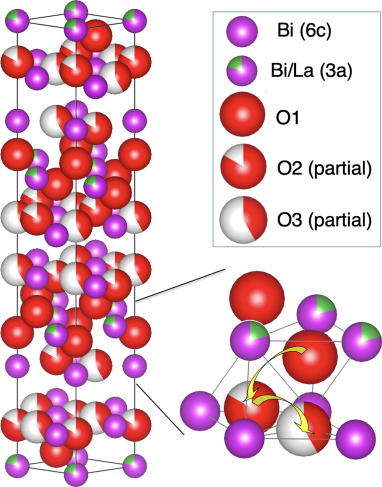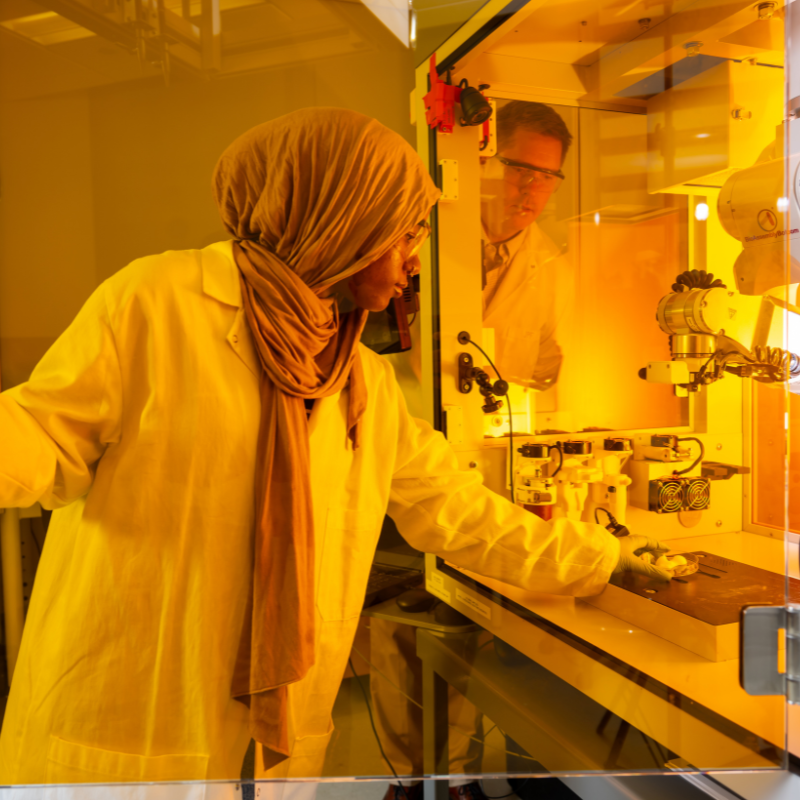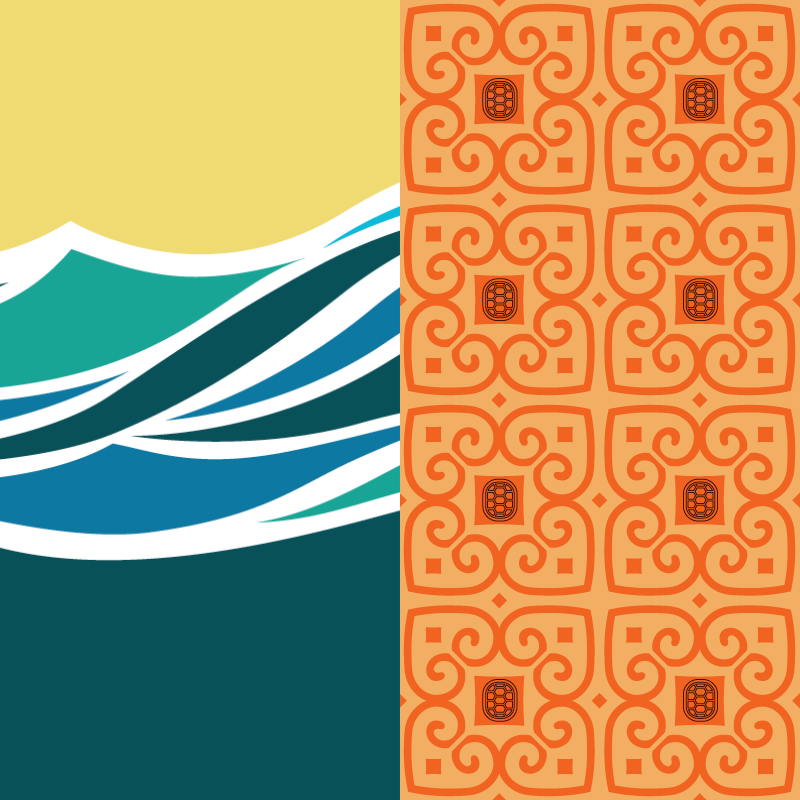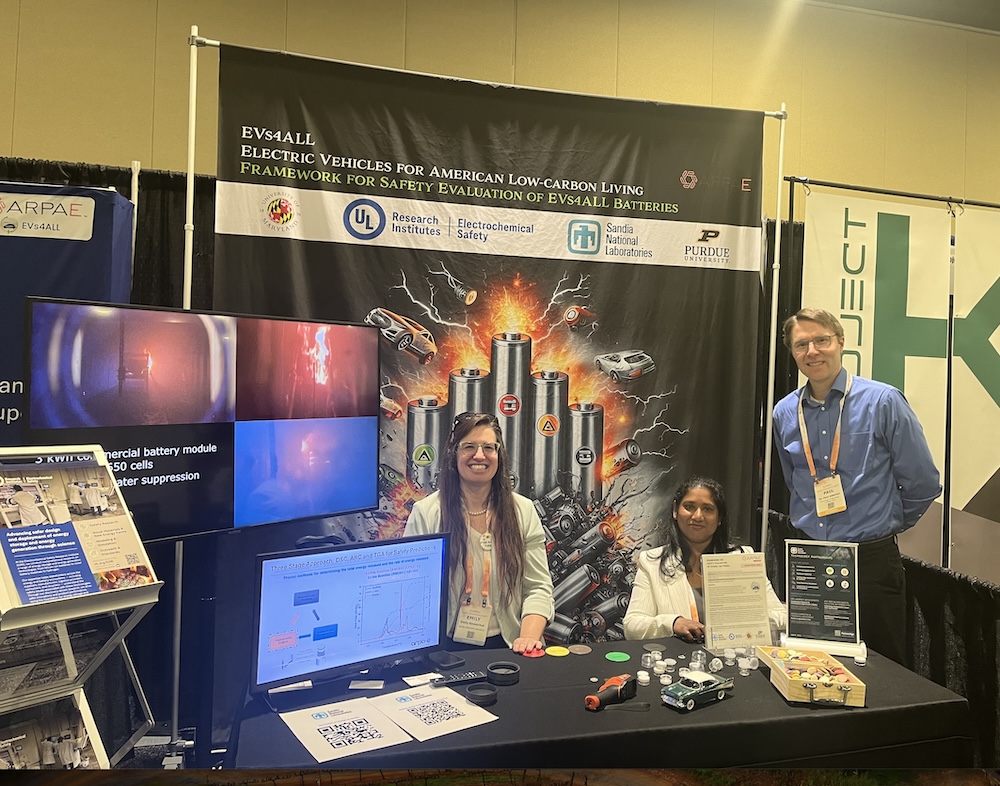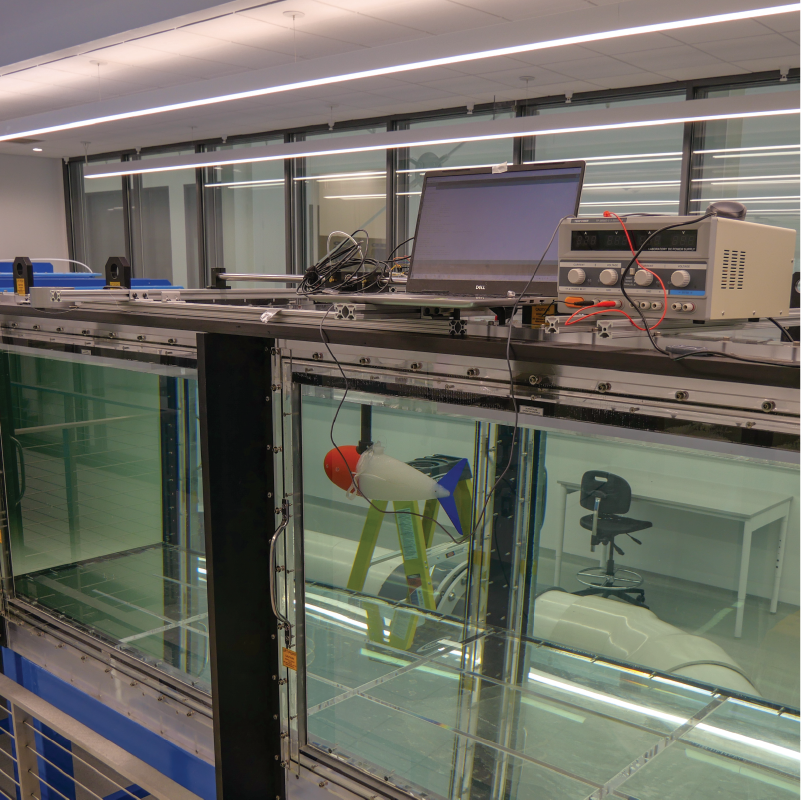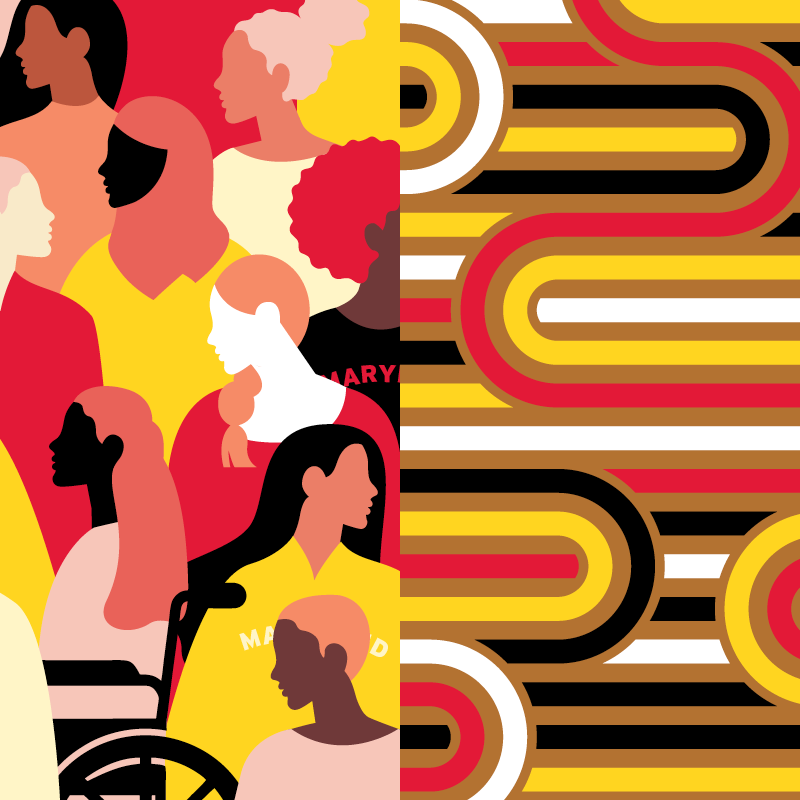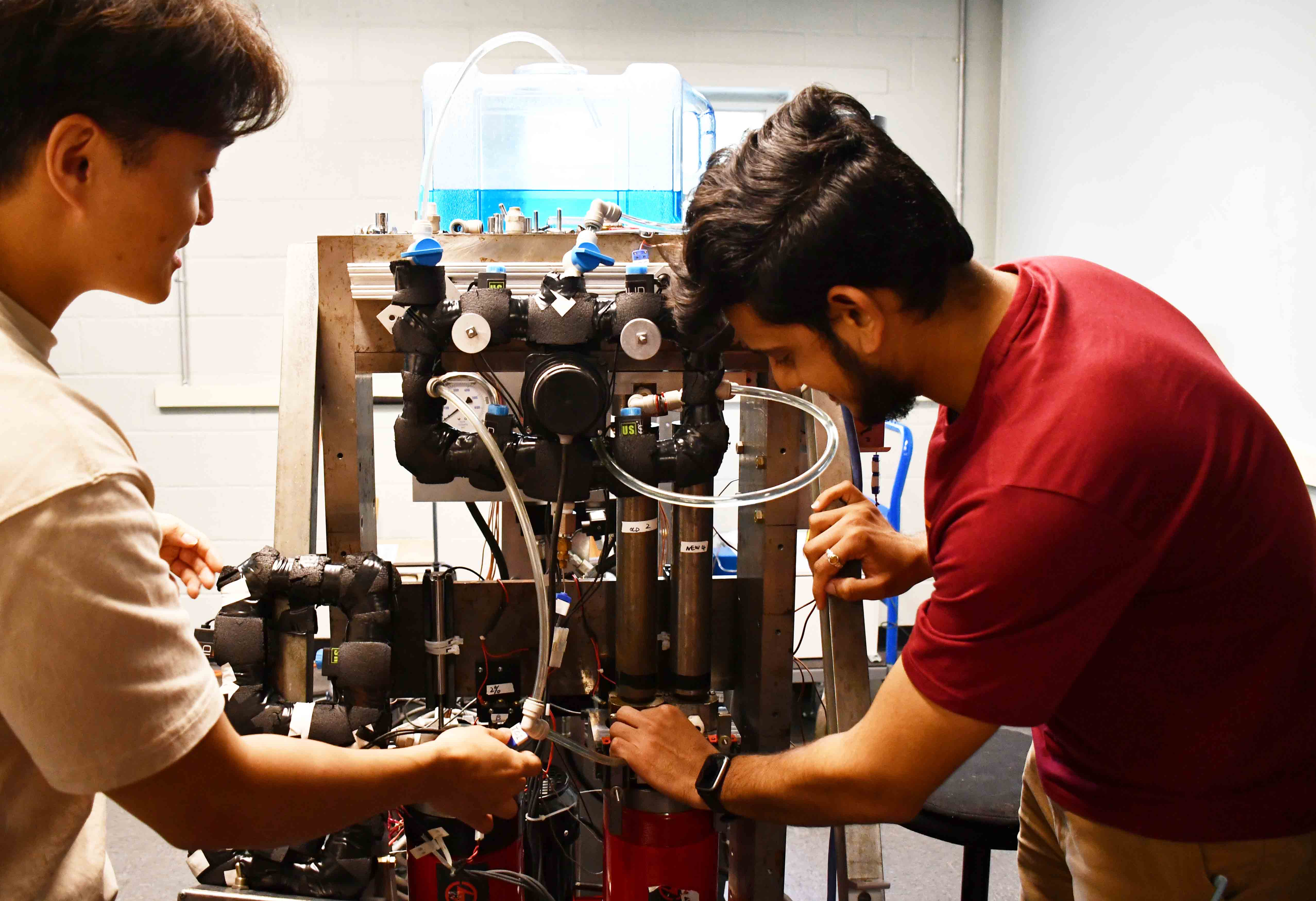News Story
Phaneuf Press Release Gets Noticed
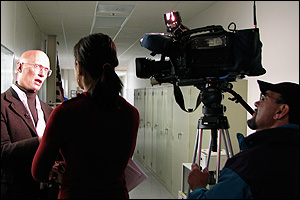
Associate Professor Ray Phaneuf (far left) being interviewed by CTV76's Saadia Van Winkle (center).
The story has been picked up by over 75 online and print news outlets around the world, including ComputerWorld, The Seattle Times, PC World, Semiconductor International, Sensor Magazine, and PhysOrg.com. The attention led to Phaneuf being interviewed for more in-depth stories on BBC Radio, on CTV76 News (regional cable), in Nanomaterials News, and in the University's own newspaper, The Diamondback.
The story discusses the efforts of Phaneuf and his research group at the Laboratory for Physical Sciences to develop a process to quickly mass-produce nanoscale devices that can be used in future generations of ever-smaller electronics. While scientists know how to make nanoscale components, industry has been stymied by the lack of an efficient and cost-effective way to bring these advances to consumers. Phaneuf's method takes advantage of nature's tendency to self-assemble atoms into shapes and patterns, such as snowflakes, crystals, and spirals when provided with the right stimulus. In this particular case, the "growth" of the raw materials into a usable structure or pattern is stimulated by heat or an electrical current and then guided by a template, like water following the path of a canyon.
Watch the CTV76 News segment (Courtesy of CTV76):
QuickTime (.mov) | Windows Media (.wmv)
Related Stories:
"Nature-Made" Computers: Clark School Engineers Teach Nature to "Grow" High-Tech Components » (Original Clark School press release.)
"Teaming up with nature" » (From The Diamondback online.)
"Growing nanoscale components via directed self-assembly" (PDF; from Nanomaterials News. Includes links to related journal abstracts.)
For More Information:
"Templating for Directed Self Assembly" » (A more technical explanation of the project.)
Ray Phaneuf's research group »
Published February 7, 2008
